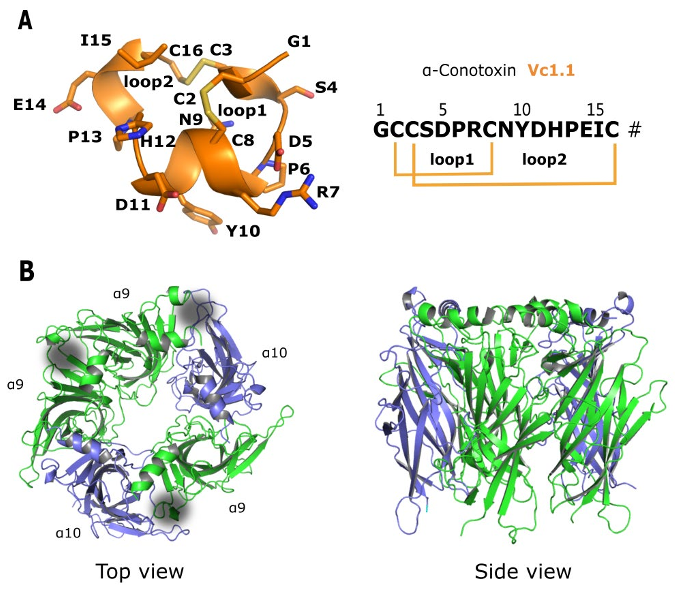
';6C2?@6AF<3)<99<;4<;4';6C2?@6AF<3)<99<;4<;4
$2@2.?05!;96;2$2@2.?05!;96;2
99.D.??.2.9A5.;12160.9$2@2.?05;@A6ABA2 .0B9AF<3%062;0221606;2.;12.9A5
α<;<A<E6;(0@A?B0AB?2.0A6C6AF?29.A6<;@56=.AA525B:.;αα<;<A<E6;(0@A?B0AB?2.0A6C6AF?29.A6<;@56=.AA525B:.;
;60<A6;60.02AF905<96;2?202=A<?6;C2@A64.A21/F:6;6:.9@61205.6;;60<A6;60.02AF905<96;2?202=A<?6;C2@A64.A21/F:6;6:.9@61205.6;
?2=9.02:2;A?2=9.02:2;A
*6;5B
!02.;';6C2?@6AF<356;.
.;%52;&.2
';6C2?@6AF<3)<99<;4<;4
5@A.2B<D21B.B
#6;496.;4*B
!02.;';6C2?@6AF<356;.
&.<6.;4
!02.;';6C2?@6AF<356;.
.C611.:@
';6C2?@6AF<3)<99<;4<;4
17.1.:@B<D21B.B
%22;2EA=.423<?.116A6<;.9.BA5<?@
<99<DA56@.;1.116A6<;.9D<?8@.A5AA=@?<B<D21B.B65:?6
".?A<3A5221606;2.;12.9A5%062;02@<::<;@
$20<::2;1216A.A6<;$20<::2;1216A.A6<;
5B*6;&.2.;%52;*B#6;496.;46.;4&.<1.:@.C61.;1+B$6926α<;<A<E6;(0
@A?B0AB?2.0A6C6AF?29.A6<;@56=.AA525B:.;αα;60<A6;60.02AF905<96;2?202=A<?6;C2@A64.A21/F
:6;6:.9@61205.6;?2=9.02:2;A
99.D.??.2.9A5.;12160.9$2@2.?05;@A6ABA2
5AA=@?<B<D21B.B65:?6
$2@2.?05!;96;26@A52<=2;.002@@6;@A6ABA6<;.9?2=<@6A<?F3<?A52';6C2?@6AF<3)<99<;4<;4<?3B?A52?6;3<?:.A6<;
0<;A.0AA52'!)6/?.?F?2@2.?05=B/@B<D21B.B

α<;<A<E6;(0@A?B0AB?2.0A6C6AF?29.A6<;@56=.AA525B:.;αα;60<A6;60<;<A<E6;(0@A?B0AB?2.0A6C6AF?29.A6<;@56=.AA525B:.; ;60<A6;60
.02AF905<96;2?202=A<?6;C2@A64.A21/F:6;6:.9@61205.6;?2=9.02:2;A.02AF905<96;2?202=A<?6;C2@A64.A21/F:6;6:.9@61205.6;?2=9.02:2;A
/@A?.0A/@A?.0A
α<;<A<E6;(06;56/6A@A52;60<A6;60.02AF905<96;2?202=A<?;5$αα@B/AF=2.;15.@A52
=<A2;A6.9A<A?2.A;2B?<=.A56005?<;60=.6;&<1.A2A520?F@A.9@A?B0AB?2<3(0/<B;1αα;5$
?2:.6;@B;.C.69./92A5B@B;12?@A.;16;4A52@A?B0AB?2G.0A6C6AF?29.A6<;@56=<3(0D6A5A52αα
;5$?2:.6;@05.992;46;4;A56@@AB1FA52(0@61205.6;@D2?2:6;6:.99F:<16H21A<.C<61
6;A?<1B06;49.?429<0.90<;3<?:.A6<;=2?AB?/.A6<;A<A526;A2?.0A6<;@/2AD22;(0.;1αα;5$
&52?2@B9A@@B442@AA5.AA525F1?<EF94?<B=<3(0+3<?:@.5F1?<42;/<;1D6A5A520.?/<;F94?<B=
<3α .;1.5F1?<42;/<;11<;<?6@?2>B6?21<D2C2?(0%6@.17.02;AA<A52α.;1
.;1.=<@6A6C205.?42?2@61B2.AA56@=<@6A6<;6;0?2.@2@A52/6;16;4.I;6AF<3(0B?A52?:<?2
A520.?/<EF94?<B=<3(03<?:@AD<5F1?<42;/<;1@D6A5α .;1$?2@=20A6C29FD52?2.@
6;A?<1B06;4.;2EA?.0.?/<EF94?<B=.AA56@=<@6A6<;@64;6H0.;A9F120?2.@2@A52=<A2;0F<3(0%20<;1
42;2?.A6<;:BA.;A@<3(0,%./ -.;1,%./ )-6;0?2.@21=<A2;0F.AA52αα;5$/F
3<910<:=.?21D6A5A5.A<3(0&52,%./ )-:BA.A6<;.923320A@.A=<@6A6<;@.;1<3(0
.?2;<A0B:B9.A6C2/BA.?20<B=921D6A52.05<A52?!C2?.99<B?H;16;4@=?<C612C.9B./926;@645A@6;A<A52
@A?B0AB?2G.0A6C6AF?29.A6<;@56=<3(0D6A5A52αα;5$.;1D6990<;A?6/BA2A<3B?A52?12C29<=:2;A
<3:<?2=<A2;A.;1@=206H0(0.;.9<4B2@
6@06=96;2@6@06=96;2@
21606;2.;12.9A5%062;02@
"B/960.A6<;2A.69@"B/960.A6<;2A.69@
5B*&.2*B#6.;4&1.:@+B$α<;<A<E6;(0@A?B0AB?2.0A6C6AF
?29.A6<;@56=.AA525B:.;αα;60<A6;60.02AF905<96;2?202=A<?6;C2@A64.A21/F:6;6:.9@61205.6;
?2=9.02:2;A%52:60.9 2B?<@062;02
BA5<?@BA5<?@
*6;5B.;%52;&.2#6;496.;4*B&.<6.;4.C611.:@.;1$6926+B
&56@7<B?;.9.?A60926@.C.69./92.A$2@2.?05!;96;25AA=@?<B<D21B.B65:?6

1
α-Conotoxin Vc1.1 Structure-Activity Relationship at the Human α9α10
Nicotinic Acetylcholine Receptor Investigated by Minimal Side Chain
Replacement
Xin Chu,
1,2ǂ
Han-Shen Tae,
3ǂ*
Qingliang Xu,
1,2
Tao Jiang,
1,2
David J. Adams,
3
and Rilei Yu
1,2,4*
1
Key Laboratory of Marine Drugs, Chinese Ministry of Education, School of
Medicine and Pharmacy, Ocean University of China, 5 Yushan Road, Qingdao
266003, China
2
Laboratory for Marine Drugs and Bioproducts, Qingdao National Laboratory for
Marine Science and Technology, Qingdao 266003, China
3
Illawarra Health and Medical Research Institute (IHMRI), University of Wollongong,
Wollongong, New South Wales 2522, Australia
4
Innovation Center for Marine Drug Screening & Evaluation, Qingdao National
Laboratory for Marine Science and Technology, Qingdao 266003, China
*
Corresponding authors: hstae@uow.edu.au or ryu@ouc.edu.cn
ǂ
Both authors contributed equally to this manuscript.

2
ABSTRACT
α-Conotoxin Vc1.1 inhibits the nicotinic acetylcholine receptor (nAChR) α9α10
subtype and has the potential to treat neuropathic chronic pain. To date, the crystal
structure of Vc1.1 bound-α9α10 nAChR remains unavailable, thus understanding the
structure-activity relationship of Vc1.1 with the α9α10 nAChR remains challenging.
In this study, the Vc1.1 side chains were minimally modified to avoid introducing
large local conformation perturbation to the interactions between Vc1.1 and α9α10
nAChR. The results suggest that the hydroxyl group of Vc1.1, Y10, forms a hydrogen
bond with the carbonyl group of α9 N107 and a hydrogen bond donor is required,
whereas Vc1.1 S4 is adjacent to the α9 D166 and D169, and a positive charge residue
at this position increases the binding affinity of Vc1.1. Furthermore, the carboxyl
group of Vc1.1, D11, forms two hydrogen bonds with α9 N154 and R81 respectively,
whereas introducing an extra carboxyl group at this position significantly decreases
the potency of Vc1.1. Second generation mutants of Vc1.1 [S4Dab, N9A] and [S4Dab,
N9W] increased potency at the α9α10 nAChR by 20-fold compared with that of
Vc1.1. The [S4Dab, N9W] mutational effects at positions 4 and 9 of Vc1.1 are not
cumulative but are coupled with each other. Overall, our findings provide valuable
insights into the structure-activity relationship of Vc1.1 with the α9α10 nAChR and
will contribute to further development of more potent and specific Vc1.1 analogues.
KEYWORDS: α-Conotoxin, nicotinic acetylcholine receptor; structure-activity
relationship; unnatural amino acids; molecular dynamics simulations; mutagenesis

3
1. Introduction
Conotoxins are disulfide-rich peptides from the venom of marine snails of the
Conus genus.
1-3
The conopeptides range from 10 to 40 amino acids in length and have
a compact structure stabilized by several disulfide bonds.
4
Compared with other
natural peptide toxins, conotoxins have considerable advantages such as relatively
small molecular mass, structural stability, high selectivity, potency, and easy
synthesis.
5-9
α-Conotoxins were one of the earliest discovered conotoxins, usually composed
of 12 to 30 amino acid residues,
10
and can specifically target nicotinic acetylcholine
receptors (nAChRs).
11
Several α-conotoxins have shown promising therapeutic
potential
12
with a most prominent example being α-conotoxin Vc1.1 (Figure 1A).
13
Vc1.1 is a 16 amino acid, disulfide-bonded peptide identified from the venom of C.
victoria
14
and potently inhibits the α9α10 nAChR.
15-17
nAChRs are pentameric ligand-gated ion channels consisting of an extracellular
domain, a transmembrane domain and an intracellular domain and are expressed in
the central and peripheral nervous systems and non-neuronal cells.
18,19
The conotoxin
binding site is located at the extracellular domain contributed by the principal (+) and
complementary (−) components of two adjacent subunits (α1-α10, β1-β4, γ, δ or ε).
20
In the nervous system, they mediate the role of the neurotransmitter acetylcholine and
are involved in rapid synaptic transmission.
21-23
The non-neuronal functions of
nAChRs include cellular proliferation and regulation of the immune system. There are
many different nAChR subtypes with preferential distribution in the nervous system,





![Figure 4. Interactions established by position 4, 6, 10 and 11 of Vc1.1 analogues in α9(+)-α9(−) interfaces of the hα9α10 nAChR, respectively. (A, B, C, D, E, F, G, H, I): [S4Dab]Vc1.1, [S4Dap]Vc1.1, [S4K]Vc1.1, [P6Hyp]Vc1.1, [Y10F]Vc1.1, [Y10F(4-F)]Vc1.1, [Y10F(4-Cl)]Vc1.1, [D11E]Vc1.1 and [D11(γ-E)]Vc1.1 bound to the interfaces of α9(+)-α9(−), respectively. The α9 subunits are shown in green. Vc1.1 residues are labeled in italic. The models of Vc1.1 analogues and α9α10 nAChR complexes were built based on that of Vc1.1/α9α10 nAChR complex using homology modeling and were refined using MD simulations in water explicitly.](/figures/figure-4-interactions-established-by-position-4-6-10-and-11-3v5bxf6v.png)
